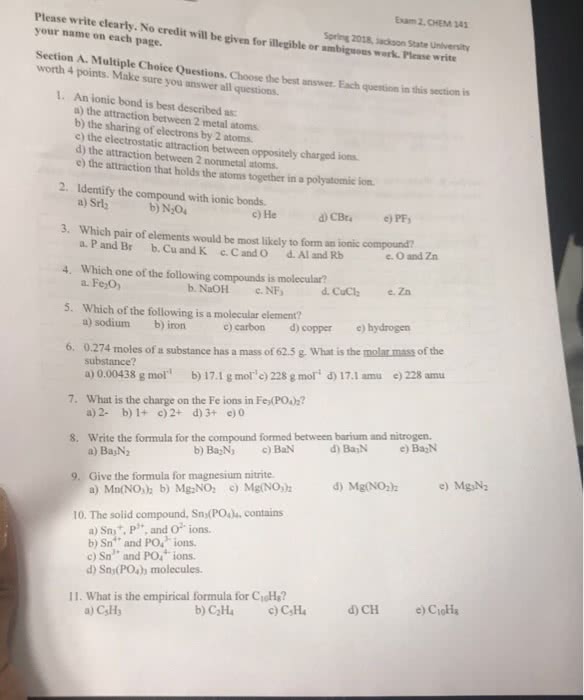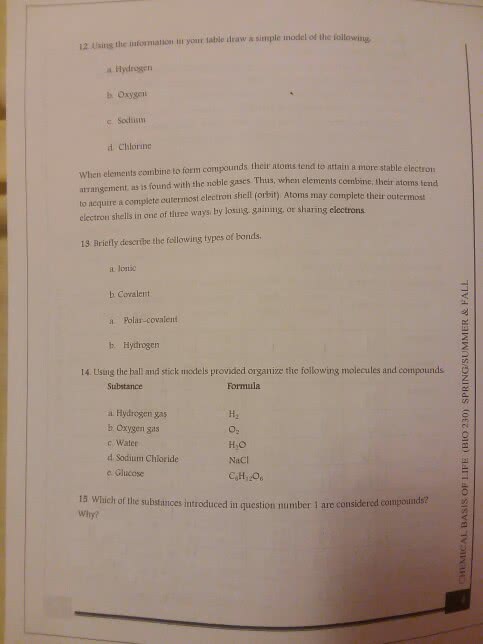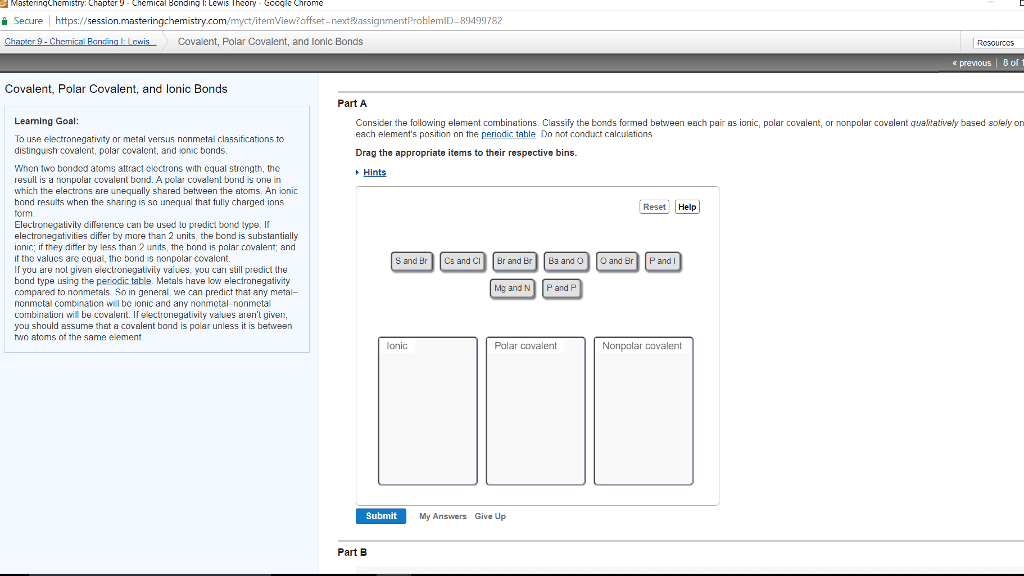CHM 121 Lecture Notes - Lecture 3: Lead Dioxide, Molar Mass, Chemical Formula
Document Summary
Elements and compounds: elements combine together to make an almost limitless number of compounds, the properties of the compound are totally different from the constituent elements, h and o are flammable. Chemical bonds: compounds are made of atoms held together by bonds, chemical bonds are forces of attraction between atoms, the bonding attraction comes from attractions between protons and electrons. Bond types: two general types of bonding between atoms found in compounds, ionic and covalent. Ionic bonds result when electrons have been transferred between atoms, resulting in oppositely charged ions that attract each other. Generally, found when metal atoms bond to nonmetal atoms. Complete transfer of electrons: covalent bonds result when two atoms share some of their electrons. Generally, found when nonmetal atoms bond together. Nacl is a formula unit because it is one part of the whole thing: overall charge = 0, when forming take the subscripts, swap them and bring them to the top.





